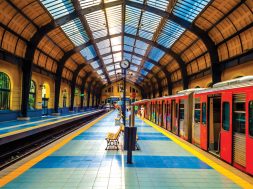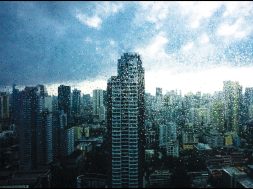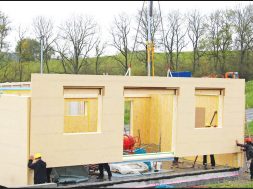High-Rise maintenance techniques: The key to improving the building lifespan

From perfect choice of materials to preemptive techniques and proper design and planning the maintenance of a high-rise building is a multi-facetted issue.
A cross India construction of high-rises is prevalent, in current times they have also come to define the status and prestige of urban cities. But to keep this prestige intact maintenance of these high-rises is extremely necessary Madhav Raman, Co-Founder, Anagram Architects says “Regular inspection, repair and maintenance of concrete surfaces and structures of a building has become an important part of building management protocols along with the usual annual servicing of electronic, electrical, HVAC and mechanical systems of a building. Another increasingly significant aspect of building maintenance is insulations and waterproofing in engineered facades. As more and more constructions adopt steel framing for quicker deployment, fire and rust protection too becomes an important new aspect requiring maintenance.”
Voicing a similar opinion but adding some more key areas in the ambit of maintenance, Namrata Mehra, Head of Design, Marketing & Customer Centricity Vikhroli, Godrej Properties says “With respect to high rises key preemptive maintenance measures are required both for engineering systems as well as the building itself. Effective facilities management includes rostered maintenance for elevators, solar panels, pumps, electrical systems, fire alarm and protection systems, water treatment plants, solid waste treatment plants. Specific to the building it is imperative to review shafts, refuge areas, canopies, tanks, roof parapets including insulation and waterproofing down to servicing measures such as access ladders themselves.”
Most of the high-rises have ostentatious glass facades. Glass Façade is an important element in buildings whose main function is to protect and distinct the internal from the external environment conditions. Hence maintenance of these facades is very important “For keeping facades intact and also saving energy, rain screen facades become important, says Shantwan Saxena Head – Sales & Design, Appletree Building Maintenance Pvt. Ltd. “The rain screen façade is basically a secondary screen façade, which avoids overheating during the summer and excessive cooling during the winters, thus it helps in maintaining the room temperature. This also helps in increasing the lifespan of a building and gives credence to the green building certification.”
When it comes to the external appearance of a high rise the external paints in use has to be carefully selected “I usually go for a very special formulation which stays intact year on year, nevertheless it is costly but considering the lifespan it’s worth it,” says Deepak Mehta, Principal Architect, Deepak Mehta Architects. Especially in the era of super luxurious properties, sea view high-rises too are very popular and command a premium price. In such high-rises, owing to their proximity to a water body, additional maintenance is required as opposed to the ones away from sea or a river “The air in such areas,” adds Deepak Mehta, is saline which catalyzes the process of oxidation and it is harmful for buildings. In such cases a different kind of external finish is required. Given the budget one can also go for a high-end ACP cladding in high-rises close to the water bodies, I too have used it in one of my projects.”
Especially for people who have grown up in homes with external wiring and piping systems, there is a feeling that from the perspective of maintenance such systems were probably much better than the concealed wiring and piping systems that are in vogue. Sheetal Bhilkar, Founder and Director, Urja Building Services Consultants Pvt Ltd dismisses such thought processes as myths, she says “Actually, what matters is workmanship. So, for concealed wiring also if workmanship is good, proper tool boxes and everything is kept properly then concealed wiring is not a problem maintenance wise. Over the years we have been using concealed wiring and we have not faced any issues because the workmanship of our contractor is good, hence it is easy to maintain it.”
For efficiency maintenance builders and developers have also become very particular about the choice of construction material. Prem Nath, Founder and Principal Architect, PNA says “Construction materials can be generally categorized into two sources, natural and synthetic. Natural materials are those that are unprocessed or minimally processed by industry, such as lumber or glass, stone, marbles, gypsum, lime and clay etc. Synthetic materials are made in industrial settings after much human manipulations, such as plastics and metals like steel, aluminum, copper, polymers, vitrified composites and prefabricated panels using new technologies etc. Due to global warming concerns, many new materials and technologies are used and being adopted by builders and developers in construction; these materials and technologies are efficient in terms of saving energy and water. They also generate alternate energy like – solar panels, solar glass and energy efficient cladding which also provide good insulation.”
Just like when we age, timely check ups are necessary likewise for buildings and aided infra facilities many believe timely audits can help save a lot of trouble “All structures deteriorate over time, due to the loads imposed on them, exposure to the environment and time dependent changes such as fatigue, creep and shrinkage. It is difficult to lay down a frequency for such audits. What is required is an effective inspection management system,” says Shashank Vaidya,Director, Gem Engserv Pvt. Ltd “Different structures deteriorate at different rates and the inspection frequency should be flexibly determined. Younger structures do not require frequent audits, whereas older ones require to be monitored at closer intervals. It is also a good practice to have different protocols for general and detailed inspections. General inspections help detect any defect early and can trigger detailed or focused inspections.”
As we move ahead newer materials will emerge for construction of high-rises and other infrastructural facilities and likewise the maintenance procedures too will get upgraded. Mugilan Muthaiah, Founder & CEO, Mano Project Consultants Pvt. Ltd says “The key materials which will forge the buildings of the future are uPVC windows to resist the wind load, strong bonding chemicals for building materials to avoid water usage for construction. Likewise geopolymers, self-healing concrete, corrosion resistant steel, and carbon wrapping will be used to enhance the building’s lifespan.” In a way yet again sustainability will emerge as an important factor. “The key materials that will forge the future of the building industry will aim at sustainability as a major aspect,” believes Jayesh Rajpurohit, Co-Founder and CEO, Brick&Bolt “global warming, the ongoing pandemic, carbon footprints and a general strengthening of regulation around pollution etc. will ultimately provide an impetus to sustainable methods of construction and in the larger scheme sustainability itself.”
205
Cookie Consent
We use cookies to personalize your experience. By continuing to visit this website you agree to our Terms & Conditions, Privacy Policy and Cookie Policy.









